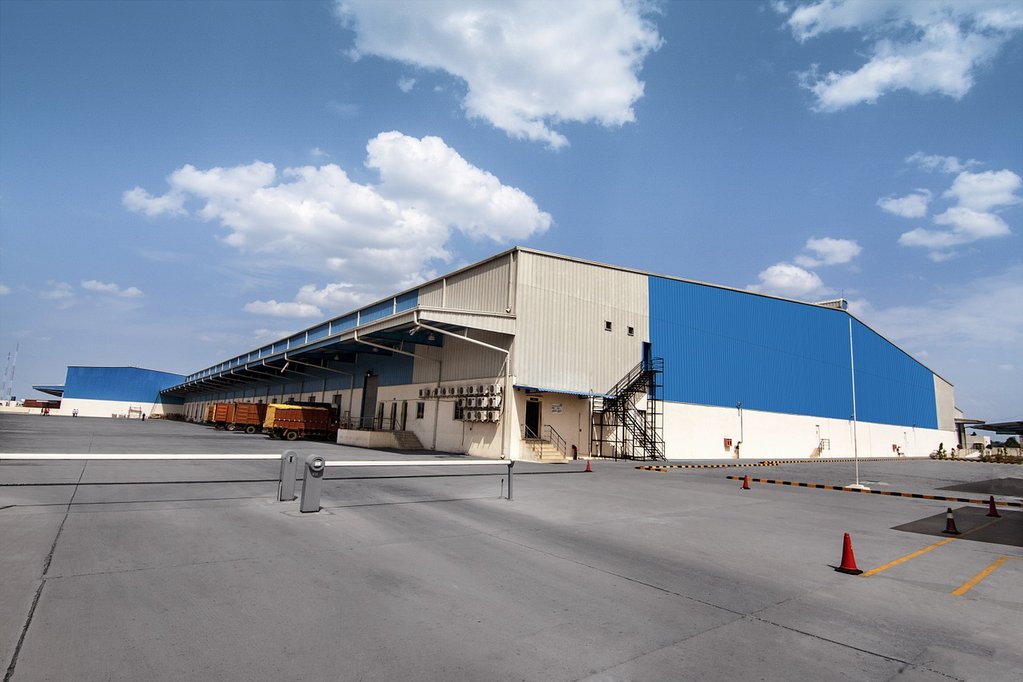Cambrige AS and A Level Accounting Notes (9706)/ ZIMSEC Advanced Accounting Level Notes: International Accounting Standard 2 (IAS 2): Inventories
- This International Financial Reporting Standard deals with inventories specifically:
- It defines what assets are to be considered inventories
- It dictates how these inventories are to be valued
- Prescribes how these inventories ought to be treated in accounting terms including how they are supposed to be treated in the Financial Statements
- According to the standard inventories are assets which are:
- held for sale in the ordinary course of business this typically is made up stocks purchased with the express purpose that they are to be sold usually at a profit
- in the process of production for such sale i.e. finished manufactured goods that were made so they could be sold for example stocks of cars manufactured by a car company so they can be sold, bread baked by the baker for sale etc
- in the form of materials or supplies to be consumed in the production process or rendering of services:
- This would include for example raw materials to be used as direct materials
- It also includes stocks of say stationary, fuel etc to be used in the normal course of business for example delivering of goods to customers
- It would also include stocks of lubricants for machines e.g. transformer oil, grease
- It would also include stocks of spare parts to be used in the repair of machines e.g spare tyres
- Please note IAS 2 does not apply to Work in Progress, some non-tangible assets and some assets of a biological nature e.g. cows on a farm even if they are considered inventories all these are dealt with by their specific standards
Valuation of inventories
- The standard states that inventories should be valued at the lower of cost or net realisable value
- Cost- refers to:
- all the costs incurred in purchasing the item,
- costs of conversion for example repainting or for example the cost of converting from Chinese to English language software
- and other costs incurred in bringing the inventories to their present location and condition for example Carriage Inwards, Freight costs, Import Duty etc
- For goods produced withing the entity the cost shall be the total cost of production i.e. Prime Cost plus a portion of overheads that can be logically attributed to the item of inventory whose value is being determined
- Net Realisable Value-refers to the net amount that an entity expects to realise from the sale of inventory in the ordinary course of business
- Net Realisable Value can therefore defined as the estimated selling price less the estimated costs of completion and the estimated costs necessary to make the sale
- For entities such as Sky News and DStv which provide services the cost of providing the service should be considered to be the inventory
- For example the cost of acquiring broadcasting rights for the English Premiership League would be considered part of inventory
Allocation and Apportionment of Costs
- As pointed out above the cost of an inventory item has to include not just the Prime Cost but the Overheads as well
- It is often the case that more than one type of inventory is made in the same factory e.g. dairy drinks, ice cream and cheese can be made in the same farm factory
- Costs directly attributable to a given inventory item have to be allocated to that item for example the labour costs of ice cream makers has to be factored into the cost of the ice cream and not cheese
- For shared overheads for example electricity management has to determine a reasonable basis to use to apportion the costs among the products
- For example machine hours could be used to apportion electricity costs between the products
Costs to exclude and include in the value of inventories
- As pointed out above inventories shall be valued either at net realisable value or cost whichever is lower
- We have already touched on what constitutes cost
- Expenses should only be included as part of an item’s cost the extent that they are incurred in bringing the
inventories to their present location and condition - Costs might include those outlined above e.g. direct materials as well as other costs such as royalties and patents (direct expenses)
- Costs other than those defined above should simply be treated as expenses in the periods in which they occur for example:
- Depreciation of delivery vehicles
- Administrative labour costs
- Advertising costs
- Interest on overdue purchase accounts for entities that purchase inventory on credit
- All these expenses should simply be treated as expenses in the Profit and Loss Account (no to be confused with the Income Statement which is merely a Financial Statement) in the period in which they occur
Costing Methods (Formulas)
- The following methods are often used when calculating the value of inventories:
- Specific Identification
- First in first Out (FIFO)
- Last in First Out (LIFO)
- Average Cost (AVCO)/ Weighted Average Cost
- Specific/Individual identification i.e. if we know the exact cost value of an inventory item that should be deemed to be its inventory value
- This is increasingly possible with the increase in use of bar codes and computerised accounting systems
- An item can be tracked from purchase until it is disposed of (sold)
- However there are still cases where this is simply not possible for example consider the case of a miller who buys wheat from various farmers at different prices and stores it in silos before turning it into flour, how will s/he know which batch s/he is milling and how it originally cost?
- FIFO, LIFO and AVCO will be explored elsewhere but basically the first two involves making assumptions
- For example the miller might assume that the last batch of wheat poured at the top is the one being turned into wheat first since that is how he empties his/her silos i.e by skimming from the top down
- Alternatively s/he might assume that the first batch of wheat to bought is the one being turned into flour first since his/her silos have a mechanism to empty from the bottom
- With AVCO the farmer might assume that the wheat is all mixed up and calculate the average cost per tonne
- Under this standard only FIFO and AVCO are deemed acceptable when calculating the value of inventories
Periodic vs Continuous costing
- The value of inventories might be calculated either:
- On a periodic basis where the cost of inventories i.e. balance, additional purchases and sales are computed once at the end of the period or
- Continuously i.e. every time additional purchases or inventory are disposed of
- Both methods are accepted by the standard
- Go to this post to learn more about these methods
Net Realisable value
- It has already been explained that inventory items are to be recorded at the lower of cost or net realisable value
- Traditionally inventory items are recorded at cost
- This makes sense since an entity would expect to at least receive the cost value when they sell these items
- However there are circumstances where this might no longer result in an accurate value for example:
- When inventories are damaged for example when they are in the warehouse awaiting sale or
- When they become obsolete/outdated before they can be sold
- In such instances clearly the costs incurred in purchasing these inventory items would no longer be recorable
- It would therefore be reasonable and necessary for the entity holding these stocks to write down the values of these inventories in accordance with the prudence concept
- In such cases the inventories should be valued at:
- Expected Amount to be realised when sold less costs incurred in bringing the inventories in saleable condition
- For example it might be necessary to repair the product e.g. damaged computer to bring it into a working condition
- Only specific damaged items should be valued at net realisable value and not the entire class of items
- It would be unreasonable write down all computers when only one of these is damaged
- The net realisable value rule typically only applies to inventories held for resale
- It would not for example usually apply to direct raw material inventory in cases where the final product is still selling at a price higher than cost
- For example consider a jeweller who has stockpiles of gold bars and uncut diamonds
- Fluctuations in the price of gold bars or uncut diamonds should not really affect the selling price of gold diamond encrusted rings
- For this reason there is no need to value his/her stockpiles at the lower of cost and net realisable value
Recognition
| $ | $ | |
| Revenue | xxxx | |
| Opening Inventory | xxx | |
| Add Purchases | xxxx | |
| Less Closing Inventory | xxx | |
| Cost of Sales | xxx | |
| Gross Profit | xxx |
- In accordance with the matching concept the carrying cost of inventory sold should be matched against revenue generated by the sale of that revenue as shown in the extract above
- The carrying amount of inventory is defined as the up to date and current value of inventory at the particular date on which the final accounts and financial statements are prepared
- All this simply means that before the financial statements /final accounts the value for every item of inventory has to be updated before being tallied and used in the calculation of Cost of Sales
Disclosure and presentation
- An entity should disclose the accounting policy as well as calculation method (FIFO etc) used in arriving at the inventories amounts shown in its books/statements
- The total carrying amount for inventories as well as the carrying amount for each category of inventories e.g $100 000/ £75 000 total inventory $50 000/£50 000 hardware and $50 000/£25 000 groceries etc
- The amount of inventories that were written down
- The amount of inventories held at net realisable value
- The amount of inventories recognised as an expense e.i. inventory which is totally unrecoverable
- Inventories that are being used as collateral e.g. for loans or other liabilities
NB I have tried to explain this standard as clearly as I can while keeping its spirit. The truth though is that standards generally are hard to understand for first timers. You can aide your understanding by reading this post several times. Standards are at the heart of the accounting profession even for Management Accountants
To access more topics go the ZIMSEC Advanced Level Accounting page
To access more topics go to the Cambridge AS/A level page




